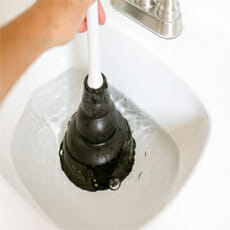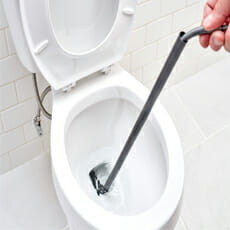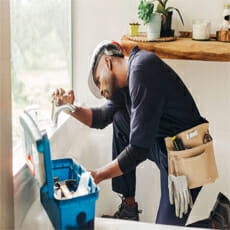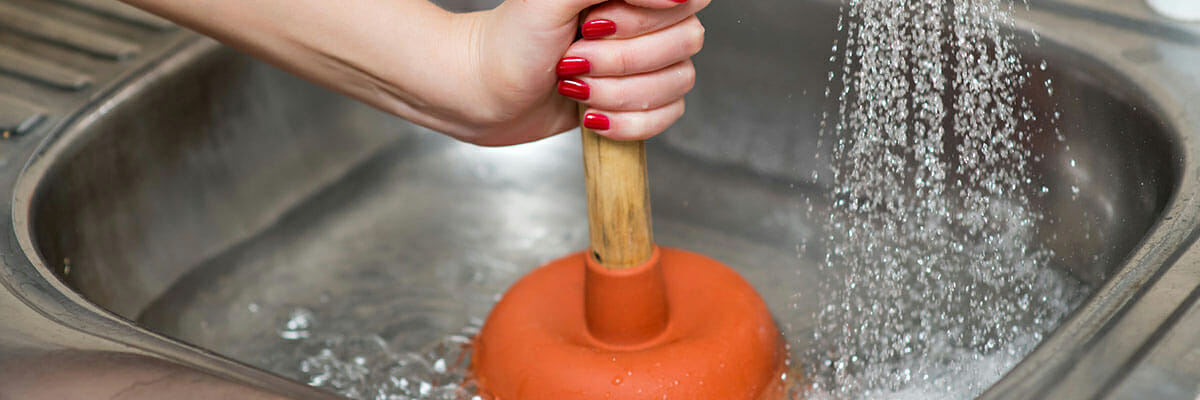Blocked drains are a common household issue that can cause significant discomfort and even property damage in severe cases. Fortunately, several simple and efficient techniques can help unblock a drain, depending on the severity and cause of the blockage. This article will examine some of the most successful methods for unclogging drains and preventing blockages from developing in the future.
Blocked drains can be caused by various factors, including the accumulation of hair, soap, grease, and food particles in pipes. The use of a plunger or drain snake is one of the most common techniques for clearing blocked drains. However, if these methods do not work, a chemical drain cleaner or a plumbing professional may be required.
To prevent blocked drains from occurring, it is essential to adopt preventive measures such as regularly cleaning drain covers and avoiding flushing non-degradable items down the toilet. Moreover, keeping drains free of hair, grease, and food debris is crucial to preventing blockages from forming in the first place.
Causes of Blocked Drains
Before we delve into how to fix a blocked drain, it’s important to understand what causes them.
- Foreign objects – Objects such as hair, food, soap, and sanitary items can accumulate in your drain and cause blockages.
- Grease and oil – Grease and oil from cooking can harden and build up in your drain, causing blockages.
- Tree roots – Tree roots can grow into your drain and cause blockages, especially if the drain is old and cracked.
- Flushed items – Flushing items such as wet wipes, cotton buds, and dental floss can cause blockages in your drain.
8 Effective Ways to Fix Blocked Drains
1. Plunger
Plungers are designed to create a vacuum that helps remove blockages. They are an effective and easy-to-use tool for removing blockages in your drains. By following these simple steps, you can use a plunger to clear your clogged drain in no time. Here’s how to use one:

Step 2: Position the plunger over the drain, making sure that it completely covers the drain.
Step 3: Push down on the plunger and then pull up quickly to create suction. Be careful not to break the seal between the plunger and the drain.
Step 4: Repeat this process several times until the blockage is cleared and the water flows freely down the drain.
Related: 4 Reasons Why Plunger Won’t Unclog a Toilet
2. Vinegar and Baking Soda
Another effective and eco-friendly method of unblocking a drain is using baking soda and vinegar. Here are the steps to using this method:
Step 1: To loosen any soap or grease, pour a pot of boiling water down the drain.
Step 2: Add half a cup of baking soda along with one cup of vinegar.
Step 3: To prevent the mixture from escaping, shield the drain with a plug or cloth.
Step 4: Wait for 15-30 minutes for the mixture to show the result.
Step 5: Additionally, pouring one more cup of boiling water will flush away the mixture and any remaining blockage.
3. Drain Snake

Step 1: Start by inserting the drain snake and pushing it in as far as it will go.
Step 2: Turn the snake clockwise to remove the blockage.
Step 3: Pull the snake out of the drain, and the blockage should come out with it.
Related article: 6 Methods to Unclog Drain if Snake Not Working
4. Chemical Drain Cleaners
Chemical drain cleaners are an option for unblocking a drain. However, they should be used as a last resort, as they can be harmful to your pipes and the environment. If you choose to use a chemical drain cleaner, follow the instructions carefully and wear protective gloves and eyewear.
5. Pour Boiling Water Down the Drain

When dealing with clogs, boiling water can be a great solution for early signs of clogged pipes. It is particularly useful for dissolving grease, soap residue, and other similar substances that can accumulate in pipes. By pouring boiling water down the drain in stages, the heat will help to break down and flush away these blockages.
It is important to exercise caution when using boiling water, particularly when dealing with older pipes or those made of certain materials. While it can be an effective method for many types of clogs, it may not be suitable for all situations. If in doubt, consult a professional plumber who can advise you on the best approach for your specific situation.
6. Use a Plumbing Snake
If the clog is particularly stubborn, a plumbing snake may be required to clear it. A plumbing snake is a long tool that can be fed down the drain to remove blockages. Begin by inserting the end of the snake and turning the handle clockwise. Continue to feed the snake into the drain, turning the handle as needed, until you feel resistance. Once you reach the clog, work the snake back and forth to break it up.
7. Try an Enzymatic Cleaner
If the clog is caused by a buildup of organic materials such as hair or food particles, an enzymatic cleaner may be the solution. Enzymatic cleaners use natural enzymes to break down and dissolve organic matter, allowing it to be easily flushed away. Follow the instructions on the cleaner, pouring it into the drain and allowing it to sit for several hours or overnight. Flush with hot water to remove anything left.
8. Call a Professional Plumber

Moreover, a plumber can conduct a comprehensive evaluation of your plumbing system to detect any underlying problems and provide preventive maintenance to prevent future blockages.
The most economical solution to address the root of the issue is, ultimately, to hire a plumber. They can also offer valuable advice on maintaining your plumbing system and avoiding future plumbing emergencies.
It is important to choose a reputable and licensed plumber to ensure that the job is done correctly and to prevent further damage to your plumbing system. Don’t hesitate to seek the help of a professional plumber if your plumbing issue is beyond your expertise.
If you need a reliable blocked drain specialist to help you solve your drainage issues. See the two links below:
Conclusion
A clogged drain can cause annoyance and inconvenience, but fortunately, there are various ways to resolve the issue. By following the instructions mentioned earlier, you can easily and quickly fix the clog and regain the full functionality of your drain. However, if the problem persists, it’s best to seek the help of a professional plumber without hesitation.
They possess the necessary tools and skills to identify and fix problems efficiently. By addressing signs of a clogged drain promptly, you can prevent further damage and costly repairs. Regular maintenance and cleaning of your drain can also prevent future clogs and ensure smooth functioning. Remember, a blocked drain may seem like a minor inconvenience, but it is crucial to address it before it worsens.
If you need help with blocked drain solutions, call Damien McEvoy Plumbing at (02) 8599 4593 and get a free quote!


 Enquire
Enquire